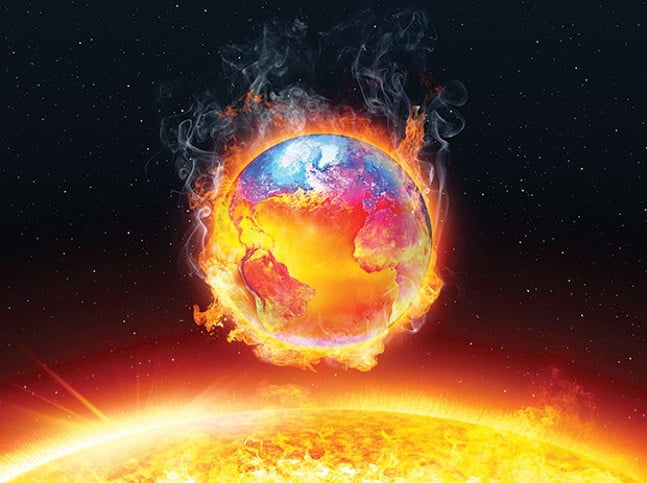Scientists anticipate that our overheated earth will breach a critical temperature limit for the first time in the coming years. According to researchers, there is now a 66% chance that we will exceed the 1.5C global warming barrier between now and 2027. The likelihood is increasing due to human-caused emissions and the El Nino weather event forecast this summer. If the world reaches the limit, scientists emphasize that the breach, while concerning, will most likely be brief. Reaching the barrier would mean that the world is 1.5 degrees Celsius warmer than it was in the second half of the nineteenth century before fossil fuel emissions from industrialization really took off. The value of 1.5 degrees Celsius has become a symbol of global climate change debates. Under the 2015 Paris Agreement, countries vowed to “continue efforts” to limit global temperature rises to 1.5 degrees Celsius.
Going above 1.5 degrees Celsius every year for a decade or two will result in significantly more severe warming effects, such as longer heatwaves, more violent storms, and wildfires. Passing the level in one of the next few years, however, would not imply that the Paris limit had been exceeded. Scientists believe there is still time to limit global warming by drastically reducing emissions. Since 2020, the World Meteorological Organisation has estimated the likelihood of the world exceeding the 1.5°C barrier in any given year.
Understanding the Implications of Exceeding 1.5 Degrees Celsius
They anticipated that there was only a 20% possibility of exceeding 1.5 degrees Celsius in the next five years. This had increased to 50% by last year, and it has now risen to 66%, which scientists believe suggests it is “more likely than not.” What does exceeding 1.5 degrees Celsius imply? The number is not a direct measure of global temperature, but rather an indication of how much or how little the Earth has warmed or cooled in comparison to the long-term global average. Scientists analyze average temperature data from 1850 to 1900 to determine how hot the planet was prior to our present reliance on coal, oil, and gas.
For decades, experts assumed that if the planet warmed by roughly 2 degrees Celsius, it would be the threshold of hazardous consequences – but in 2018, they drastically changed this prediction, suggesting that going beyond 1.5 degrees Celsius would be disastrous for the world.
Over the last few decades, our overheated planet has pushed the temperature up to 1.28 degrees Celsius beyond pre-industrial levels in 2016, the warmest year on record.
Researchers now believe that figure is about to be shattered, with 98% certainty that it will be broken before 2027. And they anticipate that in the years between now and then, the 1.5C barrier will be breached for the first time.”We are now within reach of a temporary exceedance of 1.5 degrees Celsius for the annual mean temperature, which is the first time in human history,” said Prof Adam Scaife, head of long-term forecasts at the Met Office, which compiles data from weather and climate agencies around the world. “I think that’s perhaps the most stark, obvious, and simplest statistic that we’ve got in the report,” he said during a news conference. The researchers emphasize that temperatures must remain at or above 1.5 degrees Celsius for 20 years in order to declare that the Paris Agreement threshold has been met.
Overshooting the limit, even for a single year, is a disturbing sign that warming is accelerating rather than moderating. “This report does not mean that we will permanently exceed the 1.5C level specified in the Paris Agreement, which refers to long-term warming over many years,” said WMO Secretary-General Prof. Petteri Taalas. “However, the World Meteorological Organisation (WMO) is sounding the alarm that we will temporarily breach the 1.5C level with increasing frequency,” he said.
What are the likely impacts in the UK and elsewhere?
The Arctic will warm faster than many other locations, with the temperature anomaly anticipated to be three times that of the worldwide total over the next five northern hemisphere winters. According to the analysis, Northern Europe, including the United Kingdom, would likely have more rainfall from May to September during the next five years.













